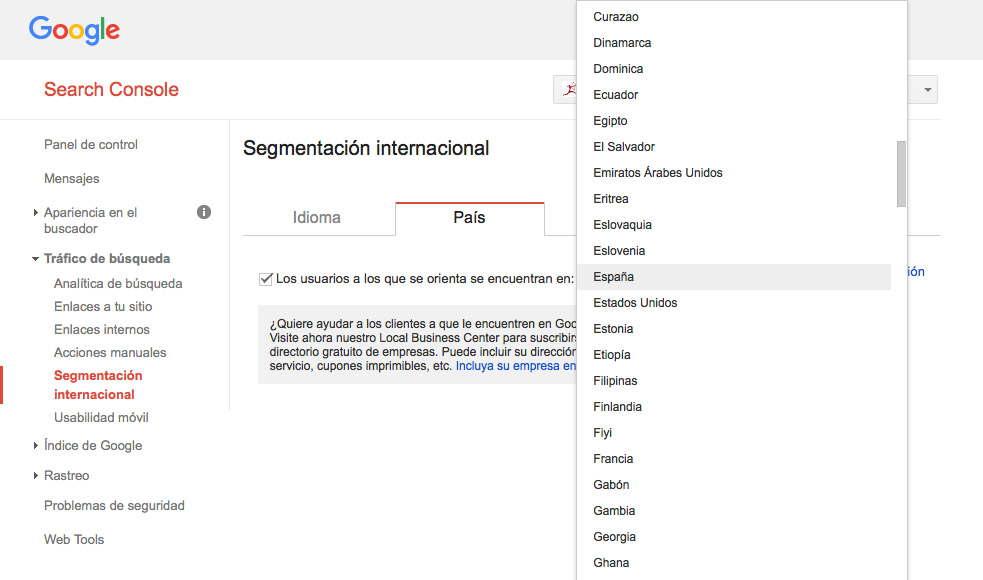Written by Fernando Maciá
Index
The geotargeting or geographical targeting of a domain in search engines indicates the focus of a domain, subdomain or subdirectory on a particular country. For ccTLD domains, the attribution to a country is the default, while for TLD domains it is configurable from the International Segmentation section of Google Search Console.

In this way, search engines give extra relevance to the results of those domains that are geographically oriented to the same area from which the user made the search.
Geographic locations of TLD and ccTLD domains
Search engines attribute a geographic location by default to the high-level geographic domains (country code Top Level Domains or ccTLD) such as .es, .it or .fr. This geographic location is independent of the geolocation of the server (although a geolocation close to the majority of users will result in better download times) and is not configurable from the tools of the search engines like Google Search Console, the Bing Webmaster Tools and Yandex Webmaster.
In these cases, the domains are geographically oriented to the corresponding country.
For generic domains (TLDs), search engines look secondly at the server location based on the domain’s IP, and this is also an important input for ccTLD domains. You can check where your domain’s IP is geolocated with tools such as IP2location.
Thirdly, search engines also take into account what type of domains receive the most inbound links, and where these domains are geolocated in turn. With these three factors, search engines assign a specific geolocation to a domain.
Additionally, some search engines can query the location of a domain’s owner by consulting the domain’s WHOIS information.
For which domains is geotargeting available?
gTLD | .aero .biz .cat .com .coop .edu .gov .info .int .jobs .net .mil .mobi .museum .name .net .org .pro .tel .travel |
ccTLD | .as .bz .cc .cd .co .dj .fm .la .me .ms .nu .sc .sr .tv .tk .ws |
rTLD | .eu .asia |

